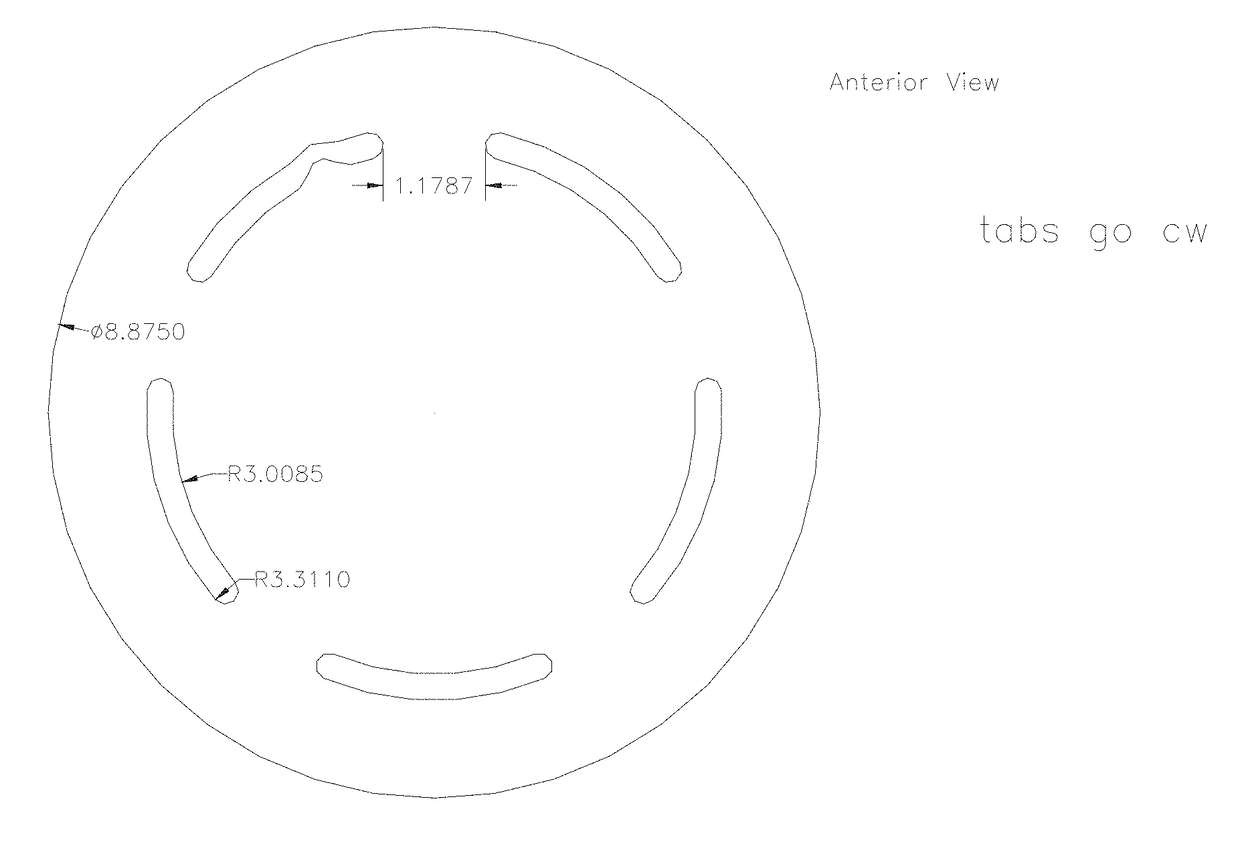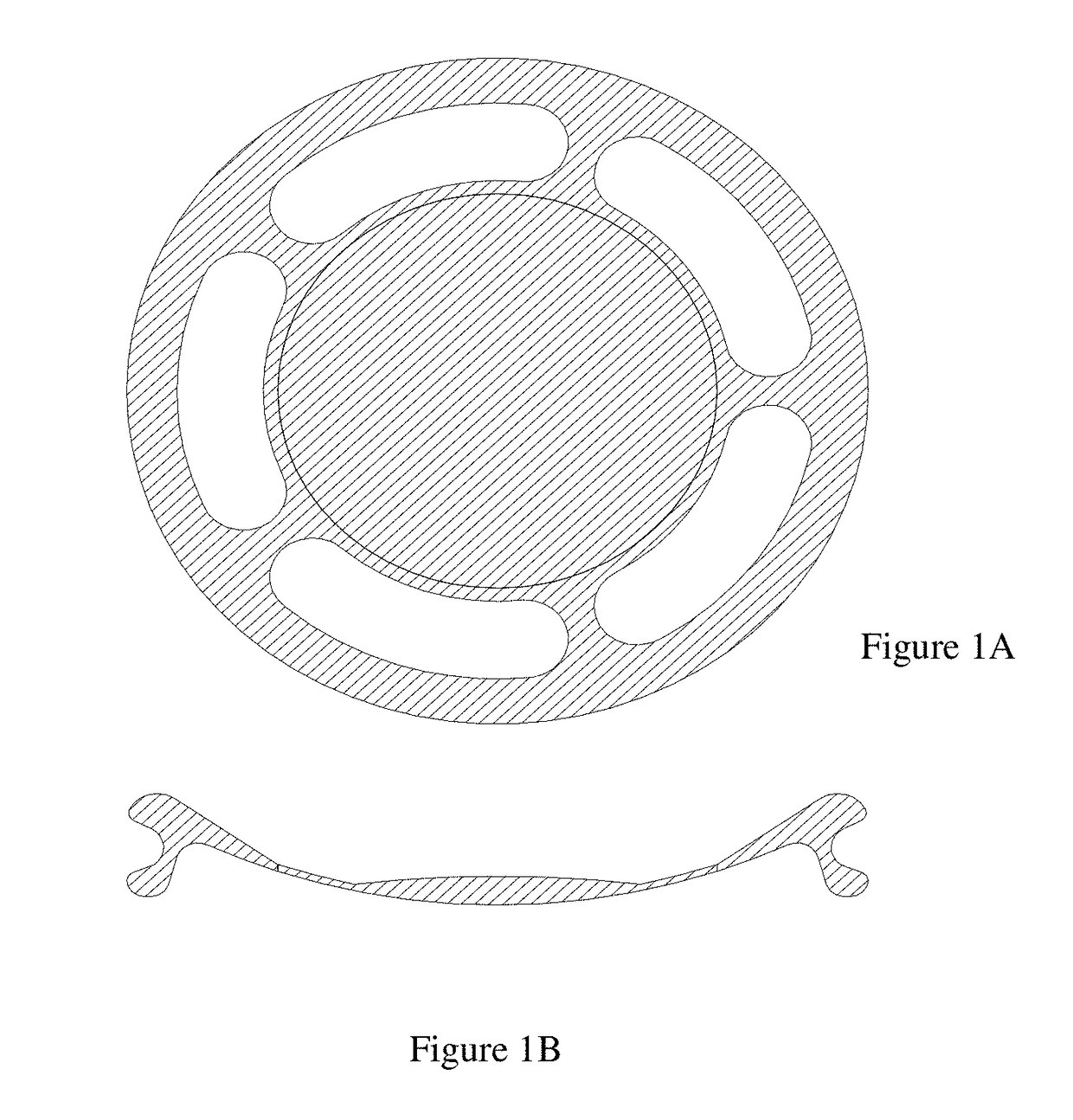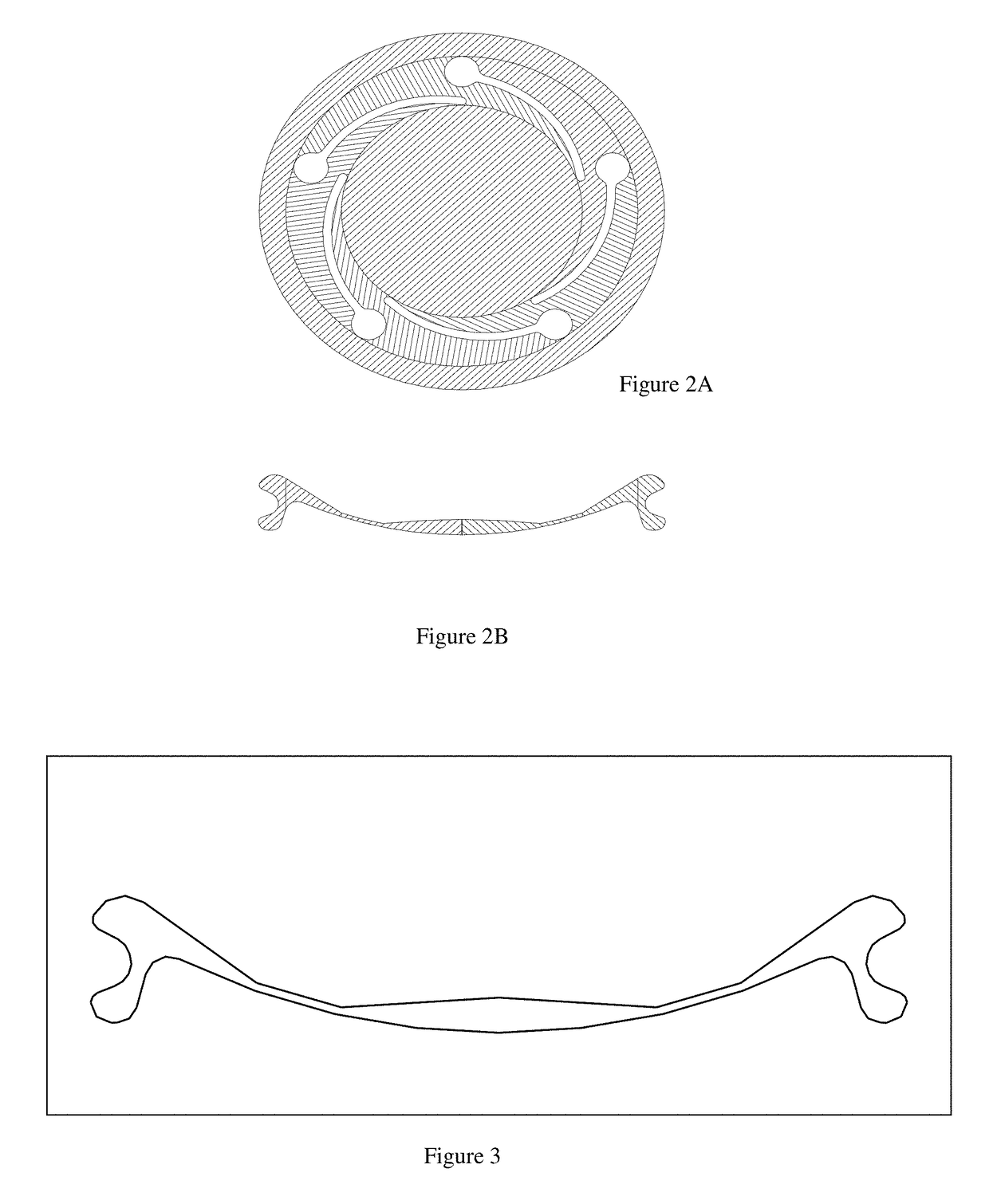Haptic devices for intraocular lens
a technology of haptic devices and intraocular lenses, which is applied in the direction of intraocular lenses, eye implants, etc., can solve the problems of minor distortions of optics, inability to provide the desired visual acuity, and reduced or eliminated the ability of eyes to change focus, so as to maximize the natural circulation of aqueous humor, minimize common post-surgical problems, and maximize the effect of focal flexibility
- Summary
- Abstract
- Description
- Claims
- Application Information
AI Technical Summary
Benefits of technology
Problems solved by technology
Method used
Image
Examples
Embodiment Construction
[0044]The haptic device is used to affix an intraocular lens within the lens capsule once the natural crystalline lens has been removed surgically. The three specific design purposes of the haptic are: i) to permit the lens to be implanted in the eye by means of an injector through an incision of less than about 3 mm; ii) to allow the lens to move within the posterior chamber of the eye in order to provide focal flexibility to the patient; and iii) to affix the lens in the lens capsule in such a way as to minimize the risk of Posterior Capsule Opacification (“PCO”), a negative consequence of lens replacement procedures that currently occurs in approximately 50% of patients within 2 to 3 years after surgery, iv) to maximize circulation of the aqueous humor within the lens capsule to minimize capsular fibrosis, and v) to provide a safe and comfortable framework for lenses with different styles of optics, with the objective of preserving as much as possible the natural physiognomy of t...
PUM
 Login to View More
Login to View More Abstract
Description
Claims
Application Information
 Login to View More
Login to View More - R&D
- Intellectual Property
- Life Sciences
- Materials
- Tech Scout
- Unparalleled Data Quality
- Higher Quality Content
- 60% Fewer Hallucinations
Browse by: Latest US Patents, China's latest patents, Technical Efficacy Thesaurus, Application Domain, Technology Topic, Popular Technical Reports.
© 2025 PatSnap. All rights reserved.Legal|Privacy policy|Modern Slavery Act Transparency Statement|Sitemap|About US| Contact US: help@patsnap.com



